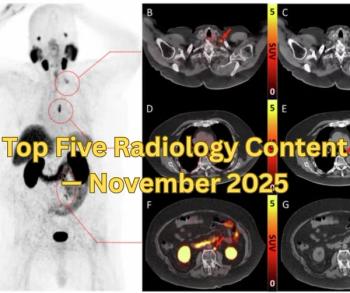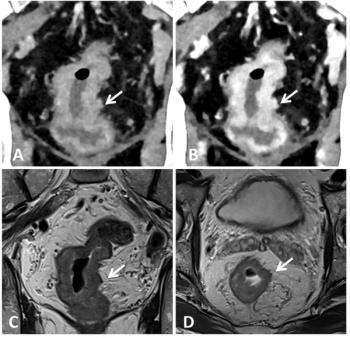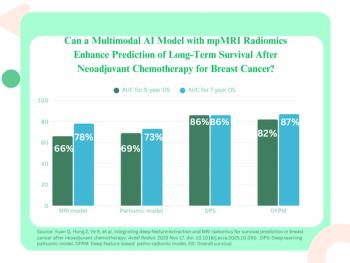
3D MRI Identifies Diabetes Patients at High Risk for Stroke
MRI finds possible marker for cardiovascular disease among asymptomatic diabetics.
Three-dimensional MRI of the carotid arteries can show early signs of stroke among patients with diabetes, according to a study that will be presented next week at the annual meeting of the Radiological Society of North America (RSNA).
Researchers from Canada sought to determine the prevalence of intraplaque hemorrhage (IPH) in asymptomatic patients with diabetes, who did not have carotid artery stenosis. “A recent analysis of multiple studies has shown that people with carotid artery narrowing and IPH have a five- to six-times higher risk of stroke in the near future compared to people without,” author Tishan Maraj, MBBS, imaging analyst at Sunnybrook Research Institute and M.Sc. candidate at the University of Toronto, said in a release.[[{"type":"media","view_mode":"media_crop","fid":"43647","attributes":{"alt":"","class":"media-image media-image-right","id":"media_crop_4374675049545","media_crop_h":"0","media_crop_image_style":"-1","media_crop_instance":"4802","media_crop_rotate":"0","media_crop_scale_h":"0","media_crop_scale_w":"0","media_crop_w":"0","media_crop_x":"0","media_crop_y":"0","style":"height: 168px; width: 300px; float: right;","title":"Image A shows the 3D MRI intraplaque hemorrhage (IPH) sequence as acquired in the coronal plane. The red dotted line indicates the level at which the reformatted axial plane, B, was obtained. C shows the section of the right carotid artery with a region of high signal consistent with IPH. Contours are drawn for the outer wall (green) and lumen (red) with the area of IPH in this segment shaded blue in D. ","typeof":"foaf:Image"}}]]
A total of 159 asymptomatic patients with type 2 diabetes participated in the study. Their mean age was 63.1, and 62.3% of the patients were male; 17.9% reported a history of smoking and 69.2% were taking hypertensive medication. All underwent baseline 3D T1-weighted black blood imaging for visualization of intraplaque hemorrhage (3D-MRIPH) and 3D- time of flight imaging. Carotid artery vessel wall (VW) volumes and IPH volumes were determined bilaterally for a standard 32 mm segment centered at each carotid bifurcation.
The results showed that 37 patients (23.3%) had IPH, five patients in both carotid arteries. The researchers found IPH in the absence of carotid artery stenosis and that it was associated with an increased carotid artery wall volume.
“It was surprising that so many diabetic patients had this feature,” Maraj said in the release. “We already knew that people with diabetes face three to five times the risk of stroke, so perhaps IPH is an early indicator of stroke risk that should be followed up.”
The researchers concluded that IPH can be found in the absence of carotid artery stenosis in asymptomatic patients with diabetes and is associated with an increased carotid artery wall volume as measured by 3D-MRI. These findings may help identify individuals at higher risk of cardiovascular disease.
Newsletter
Stay at the forefront of radiology with the Diagnostic Imaging newsletter, delivering the latest news, clinical insights, and imaging advancements for today’s radiologists.




























